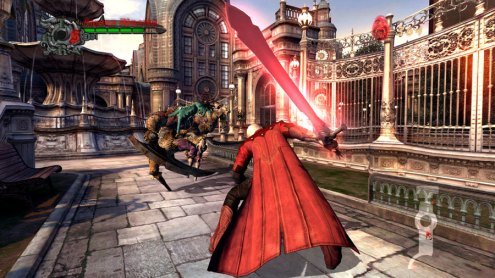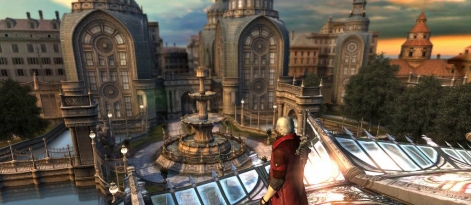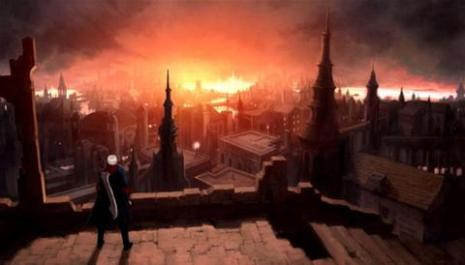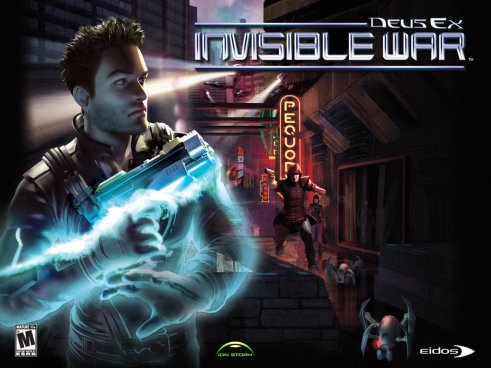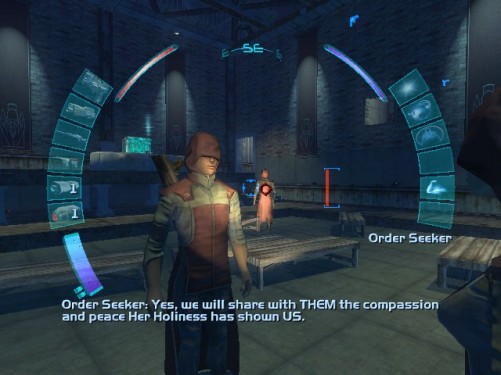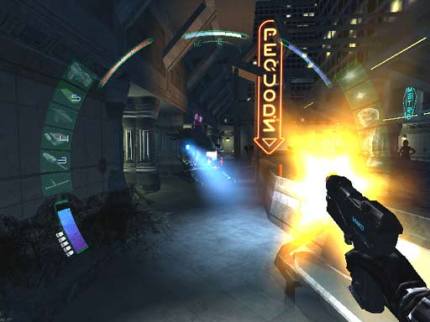Devil May Cry 4- “Sequels Make You Cry”
“Capcom” is one of the most preeminent companies in the industry; it’s also one of the most innovative, especially considering the last few years. However, that doesn’t mean they don’t milk their sacred cows… quite on the contrary, they also have one of the more sequel driven publishing strategies. From a financial point of view, their tactic is quite sound: use “R&D-like” small production units to produce new and innovative concepts, and then explore the established franchises till they bleed, thus making enough profit to keep the boat afloat. Yet, from an artistic point of view, it’s an odd sight to see the same company name behind the brilliant “Devil May Cry” (the first one), “Killer7” and “Ôkami”, and the not so interesting “Megamans”, “Street Fighters”, “Resident Evils” and “Onimushas”.
But, the past is past, a new generation of platforms has arrived, and it remains to be seen if the financially risky creative departments will have a chance to produce new titles, considering the high production values behind xbox360 and ps3 games. So, after the original and interesting “Dead Rising”, it is with little surprise that “Capcom” now launches a sequel: “Devil May Cry 4”. “Devil May Cry”, like “Resident Evil”, has been a series filled with its fair share of ups and downs. The first “Devil May Cry” was a pure masterpiece; the second was a step backwards and the third a step sideways. So, it’s fair to say that the expectations weren’t very high. The question with this fourth installment is simple: does “Capcom” pull a “Resident Evil 4” out of the hat, or simply one more “Code Veronica”? The answer is… neither. Sadly, “Devil May Cry 4” doesn’t reinvent the series, but fortunately it has enough punch to forget the series’ uninspired past.
Looking at the game, it is nice to see that many of the original game’s concepts were recaptured and finally improved on this sequel. Firstly, the neo-gothic art style has returned in full force and went back to basics. Instead of opting for the grand-scale scenarios of “DMC2” and “DMC3”, that mixed modern urban settings with the neo-gothic architecture and some horror inspired scenarios (with mixed results), “DMC4” goes for a more classic approach, forgetting the modern settings and replacing them with nineteenth century architecture that blends much better with the neo-gothic style. In the character department, there is also a return to the series roots, with more serious (but not exaggeratingly serious) designs replacing the often ridiculous monster design of the series. And thanks to more powerful hardware, everything looks even better, with crispy HD quality and great lighting effects that make everything shine; it’s easily one of the most visually impressive games around, thanks in great part to its art design and technical execution.
The tone of the game as also taken a leap backwards to the first “DMC”, forgetting the over the top humor of “Dante’s Awakening”, and going for a more B-movie feel: either stupidly serious or seriously humorous; it’s still is charmingly funny and witty, without going to the point of being “too” ridiculous. This goes well with the plot, that though mind numbing, manages to keep some interest in its unfolding. This is, in no small part, thanks to the virtuous cut-scene directing from the hands of Yûji Shimomura (director of “Versus”), who had already worked in “DMC3” and “Onimusha 3” with great results. His cut-scenes are among the best ever seen in a videogame, and it is impossible not to notice that they are done with great cinematic flair and style, though without the limitations of a real camera. [You can see for yourself how good the cutscenes are, Opera Cutscene, Nero vs Dante Cutscene]
But those are mere details, what really matters in a “DMC” is the actual action, the one where you can take part of. And it is there that “DMC4” doesn’t do as well. On the good side of things, besides series’ veteran Dante (that comes with all the moves from previous games), there is a new playable character named Nero, that actually plays differently. It’s a not a difference you’ll notice immediately mind you, but as the game moves on, it’ll become all the more apparent: Nero’s movements were thought from scratch and forget many of the unnecessary complications of Dante’s moves (the numerous styles and weapon combinations). Nero has only one way of playing, and because of that, his gameplay feels much more modern and intuitive. Yet, many of the classic moves still make an appearance, and the somewhat obtuse and dated control system hurts the game… a lot. The reason for this lies in the use of subjective directions to make certain movements; the problem with this is that “DMC4” is too frenetic and action-driven for the player to be constantly trying to find out which direction Dante or Nero are facing, and which enemy they are targeting, especially if you consider the elevated number of enemies in each arena and the awkward camera angles (that are as bad as the ones in the first game, which dates to 2001…). So, while some progress was made in the gameplay department, its quirks and old-school approach just don’t cut it by today’s standards, and are hardly deserving of a sequel.
“Devil May Cry 4” fails to be a true sequel to the first game in the series. It’s better than its two predecessors, but not enough to make it a masterpiece. The reason for this probably lies in “Capcom’s” design department, that chose Hideaki Itsuno (director of “DMC2” and “DMC3”) for director; meanwhile Hideki Kamiya (director of the first “DMC”, “Resident Evil 2”, “Okami”, “Viewtiful Joe”) and Shinji Mikami (director of “Resident Evil”, “Resident Evil 4”, exec. producer of the first “DMC” and many, many other things) are probably doing something new that will drive games to a whole new level. It’s a shame that “Capcom” isn’t always capable of reinventing its franchises, but one must understand that in order to innovate, they first must cash in on their series. Besides, how many masterpieces can gaming geniuses Shinji Mikami and Hideki Kamyia create each season anyway? Not many, I’m afraid…
